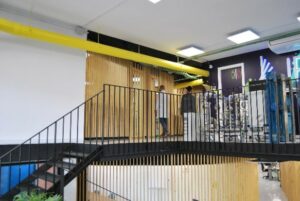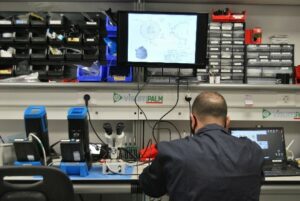If you have followed PHOTONFOOD’s project journey, you know that it is about developing devices for food contamination testing. The first part of the development is concerned with how food samples are collected, processed and then measured. But the equally important second part is concerned with how the spectroscopic data created during the measurement can be transformed into a message that will help the user in taking a decision. This second part on data analysis is what we will look at today and where IRIS Technology comes into play.

IRIS is an advanced engineering company manufacturing photonic solutions for the control of production processes in real time. Specialised in quality monitoring solutions for the process industries and systems for smart manufacturing, predominantly targeted at the food, pharmaceutical and chemical industries, they bring along exactly the knowledge needed to digitalise the PHOTONFOOD measurement devices. The devices will come in two different versions: (1) A mid-fidelity (MI-FI) version intended for quick screening of many samples; and (2) a high-fidelity (HI-FI) version for confirmation of contaminants.
In PHOTONFOOD, IRIS is closely collaborating with academic partners at the Norwegian University of Life Sciences (NMBU) and the University of Natural Resources and Life Sciences (BOKU) in Vienna. Together they will develop a software platform based on spectroscopy data for the real-time characterisation of mycotoxins. The cloud-enabled platform will contain a Decision Support Tool (DST) that will apply a “traffic-light system” visualising the contamination level in green, yellow or red. It will thus enable the tester to easily decide on the further processing of the goods on-site. To increase the accuracy of the outcome shown on the user interface, the Decision Support Tool will make use of the data coming from both the MI-FI screening device and the HI-FI confirmatory device.

The developed software will have clearly defined value propositions, allowing for commercialisation through a Software-as-a-Service business model. Such strategy will ensure that the prototypes and technology built and developed within PHOTONFOOD will be available to customers soon after the project end.
By Cristina Fernandez, IRIS Technology